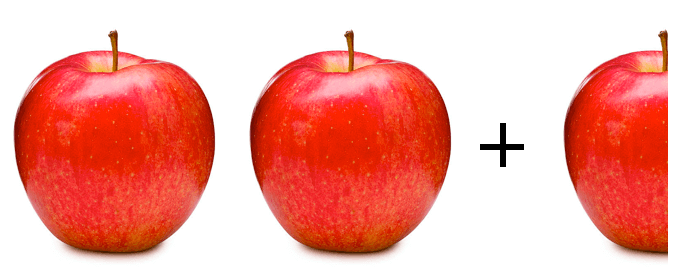Subscribe to our ▶️ YouTube channel 🔴 for the latest videos, updates, and tips.
Types of Fractions
The various types of fractions are:
1. Like Fractions:
The fractions having the same denominators are known as like fractions.
We know that fractions such as 2/5, 3/5, 5/5, 7/5, 9/5, ….etc., are like fractions.
2. Unlike Fractions:
Fractions having different denominators are called unlike fractions.
\(\frac{3}{5}\), \(\frac{2}{7}\), \(\frac{5}{9}\), \(\frac{4}{11}\), ......... are unlike fractions.
3. The same Numerator Fractions:
The factors having the same numerators are called the same numerator fractions.
Fractions such as 2/5, 2/7, 2/9, 2/11, …………, etc., are same numerator fractions.
4. Unit Fractions:
The fractions having one (1) as their numerator are called unit fractions.
1/3, 1/5, 1/7, 1/9, …………, etc., are unit fractions.
5. Proper Fractions:
A fraction in which the denominator is greater than the numerator is called a proper fraction. We can also say that a fraction with its numerator less than the denominator is known as a proper fraction.
1/2, 2/3, 4/5, 5/6, 7/10, 9/11, 11/21, 35/45, ……….., etc., are proper fractions.
A fraction in which numerator is less than its denominator.
[\(\frac{3}{4}\), \(\frac{5}{7}\), \(\frac{11}{17}\) ...............]
Observe the following number line.
Consider the fraction \(\frac{5}{8}\)
It lies between 0 and 1 and its numerator is less than the denominator.
Fractions in which numerators are smaller than the denominators are called proper fractions.
6. Improper Fractions:
A fraction in which the denominator is smaller than or equal to its numerator is called an improper fraction. We can also say that a fraction with its numerator greater than or equal to the denominator is known as an improper fraction.
5/3, 9/5, 11/7, 17/8, 21/14, 19/15, …….., etc., are improper fractions.
A fraction in which numerator is equal to or greater than its denominator.
[\(\frac{15}{7}\), \(\frac{24}{13}\), \(\frac{5}{5}\) ...............]
Consider the fraction \(\frac{10}{8}\)
It is greater than one and its numerator is greater than the denominator.
Fractions in which numerators are greater than the denominators are called improper fractions.
The fraction \(\frac{8}{8}\) = 1, similarly \(\frac{3}{3}\) = 1, \(\frac{7}{7}\) = 1, \(\frac{11}{11}\) = 1 .............
Fractions in which numerators are equal to the denominators are also called improper fractions.
7. Mixed Fractions:
When
an improper fraction is written as a combination of a whole number and a
proper number, it becomes a mixed fraction or mixed number.
As: 6/5 = 5 + 1/5 = 5/5 + 1/5 = 1 + 1/5 = 1\(\frac{1}{5}\)
1\(\frac{1}{2}\), 1(\frac{1}{4}\), 2(\frac{3}{4}\), 3(\frac{5}{7}\), 5(\frac{1}{9}\), ……….., etc., are mixed fractions.
(All types of fraction may be categorized into three kinds, i.e., proper, improper and mixed fraction).
Mary ate 2 apples and Kerry ate \(\frac{1}{2}\) of an apple. They are 2 and \(\frac{1}{2}\) apples together.
|
2 apples + \(\frac{1}{2}\) apple = 2 + \(\frac{1}{2}\) apples = 2\(\frac{1}{2}\) apples |
2 + \(\frac{1}{2}\) = 2\(\frac{1}{2}\) |
2\(\frac{1}{2}\) is read as two and a half.
In 2\(\frac{1}{2}\); 2 is the whole part and \(\frac{1}{2}\) is the proper fraction.
Fractions like 3\(\frac{3}{4}\), 5\(\frac{6}{13}\), 1\(\frac{1}{4}\) ................. are called mixed numbers.
A mixed number is the sum of a whole number and a proper fraction.
To know more details about Types of Fractions Click Here.
Questions and Answers on Types of Fractions:
I. Write whether the following are proper fractions, improper fractions or mixed numbers.
(i) \(\frac{5}{9}\)
(ii) \(\frac{13}{17}\)
(iii) \(\frac{121}{7}\)
(iv) \(\frac{1}{1}\)
(v) 16\(\frac{2}{3}\)
Answer:
I. (i) Proper fraction
(ii) Proper fraction
(iii) Improper fraction
(iv) Improper fraction
(v) Mixed fraction
Related Concept
● Representation of a Fraction
● Properties of Equivalent Fractions
● Comparison of Like Fractions
● Comparison of Fractions having the same Numerator
● Conversion of Fractions into Fractions having Same Denominator
● Conversion of a Fraction into its Smallest and Simplest Form
● Addition of Fractions having the Same Denominator
● Subtraction of Fractions having the Same Denominator
● Addition and Subtraction of Fractions on the Fraction Number Line
4th Grade Math Activities
From Types of Fractions to HOME PAGE
Didn't find what you were looking for? Or want to know more information about Math Only Math. Use this Google Search to find what you need.




New! Comments
Have your say about what you just read! Leave me a comment in the box below. Ask a Question or Answer a Question.